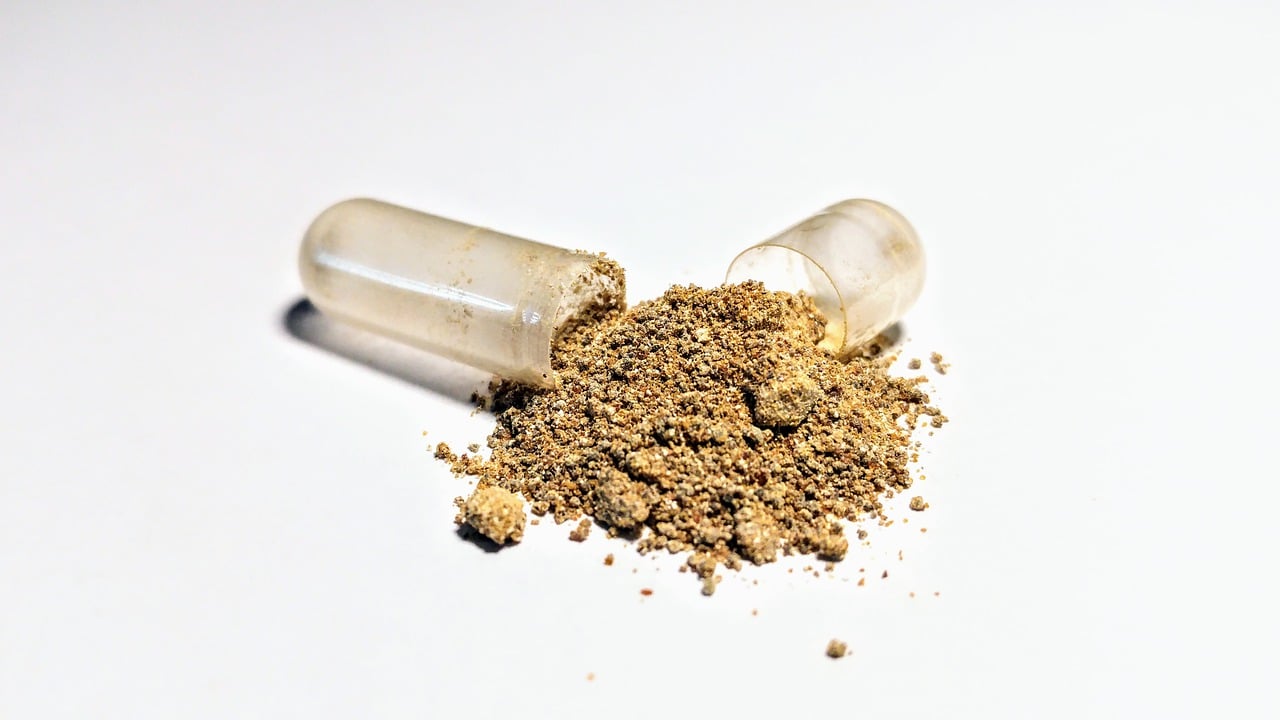Article at a Glance
- Vitamin C is one of 13 essential vitamins you need in your diet. It boosts your immune system and helps you heal faster.
- There are several forms of vitamin C available. You can get vitamin C through your diet and/or supplements.
- Check with your healthcare provider to make sure you're getting enough vitamin C.
- A vitamin C deficiency can cause serious health problems.
If you're feeling run down, a glass of orange juice or a good vitamin C supplement may be just what you need. Vitamin C helps the body boost immunity, stay energized, and heal faster. Read more below to learn how vitamin C helps keep you healthy, plus what you can do to make sure you're getting enough.
What Is Vitamin C?
Vitamin C is one of 13 essential vitamins that you need in your diet because the human body can't make these nutrients on its own.1
Vitamin C is a water-soluble vitamin, which means it dissolves in water. It's not stored in the liver or fatty-tissue like fat-soluble vitamins.1 Your body easily flushes out unused water-soluble vitamins so it is hard to take too much and uncommon to develop toxic side effects.
The Many Benefits of Vitamin C
Vitamin C has many physiological health benefits:
- Provides protection from free radicals and also supports the immune system because it is an antioxidant. Research shows that it may play a role in reducing the duration of the common cold, but only when taken as a preventive measure before getting sick.1,2 Plus, evidence suggests that vitamin C may aid in the prevention of the common cold, but only for unique populations, such as athletes taking 200 mg/day.2
- Supports the synthesis of neurotransmitters, and also collagen, an essential protein found in connective tissue, which in turn supports wound healing.1,2
- Enhances the bioavailability and nutrient uptake of certain micronutrients such as iron from plant food sources, copper, and chromium.1
- May play a role in the prevention of certain types of cancer, cardiovascular disease, and age-related macular degeneration.2
Forms of Vitamin C — Which Is Best?
There are several forms of vitamin C, including:
(1) Ascorbic acid
(2) Mineral ascorbates: calcium ascorbate, sodium ascorbate, magnesium ascorbate
(3) Ascorbic acid combined with vitamin C metabolites
(4) Vitamin C combined with bioflavonoids
(5) Ascorbyl palmitate
Vitamin C in the form of Ascorbic acid (also known as ascorbate) is a synthetic form of vitamin C. L-ascorbic acid (also known as L-ascorbate) is the natural form of vitamin C. Both forms are found naturally in foods, used to fortify foods, and used in dietary supplements.2 Types of vitamin C more typically found in supplements include ascorbic acid, mineral ascorbates, or vitamin C bound to bioflavonoids.3
Mineral ascorbates are more suitable for people who have sensitive stomachs, or who experience gastrointestinal issues with higher pH levels.3 Popular forms of mineral ascorbates are sodium ascorbate, calcium ascorbate, magnesium ascorbate that are typically found together.1
Research does not show enough evidence proving a difference in absorption between natural and synthetic forms of vitamin C.4 However, other micronutrients found in foods such as bioflavonoids, which are compounds found in plant food sources, may improve the bioavailability of vitamin C when combined together.4 Because of this synergistic effect, forms of vitamin C bound with bioflavonoids are thought to increase the bioavailability of vitamin C and enhance its therapeutic benefits.4,5
Sources of Vitamin C — From Food and Nutrition Supplements
Most animals can make vitamin C on their own. But, humans lack the capability to create their own, so vitamin C must be present in the diet.4 Many fruits and vegetables contain high amounts of vitamin C, making it possible for humans to get an adequate amount through a healthy plant-based diet.
Dietary sources rich in vitamin C include:
- citrus fruits
- peppers
- broccoli
- strawberries
- Brussels sprouts
- kiwi
- tomatoes
- potatoes6
Vitamin C content is highest when the food source is fresh and raw, as the nutrient value of vitamin C decreases after cooking or storing for a long period of time.6
Vitamin C is also found in supplemental form and has equivalent bioavailability to vitamin C food sources.1 For maximum vitamin C benefits it is recommended to supplement vitamin C in divided doses,7 so you may want to take half of the daily value in the morning and the other half in the evening.
Recommended Daily Dose of Vitamin C — What Physicians Advise
The recommended daily dose for nutrients is unique to a person's age, gender, and other personal factors. The Food and Nutrition Board (FNB) established a recommended dietary allowance (RDA) for vitamin C as a reference to meet the needs of healthy individuals. For infants, the RDA has not been established, but an adequate intake (AI) level of 40 – 50 mg has been set as a guideline for nutritional adequacy. The RDA of vitamin C for healthy adults is 90 mg/day for men and 75 mg/day for women.2
|
Recommended Dietary Allowance |
|
|
Infants (0 – 12 months) |
40 – 50 mg/day AI |
|
Children (1 – 8 years) |
15 – 25 mg/day |
|
Adolescents (9 – 18 years) |
45 – 75 mg/day |
|
Adults (19+ years) |
75 – 90 mg/day |
|
Pregnant and Lactating Women |
80 – 120 mg/day |
Table 1: Daily Vitamin C Recommended Dietary Allowance (RDA) to Meet the Needs of Healthy Indivduals2
Make Sure You're Getting Enough Vitamin C
Certain populations may need to be more mindful when evaluating their vitamin C needs:
- Smokers should increase their vitamin C intake by an additional 35 mg/day because they are exposed to more free radicals than non-smokers.1
- Individuals should consult with their physicians to determine their vitamin C needs if they are undergoing chemotherapy, radiation, or using statin medications.2
- Always consult with your primary healthcare provider before taking Healthycell® products or any nutrition supplement.
Vitamin C Toxicity Is Uncommon
Vitamin C is a water-soluble vitamin, so it is not stored in the body. It's usually not toxic as excess amounts are excreted from the body. Excessive amounts of vitamin C can cause gastrointestinal symptoms such as bloating, nausea, or diarrhea, plus there is the potential to develop kidney stones.1 To avoid these side effects, it is recommended to consume less than 1 g (gram) per day of vitamin C and the tolerable upper intake level (UL) for adults is 2 g or 2,000 mg per day.8
|
Tolerable Upper Intake Level (UL) of Vitamin C |
|
|
Infants (0–12 months) |
– |
|
Children (1–8 years) |
400–650 mg/day |
|
Adolescents (9–18 years) |
1,200–1,800 mg/day |
|
Adults (19+ years) |
2,000 mg/day |
|
Pregnant and Lactating Women |
1,800–2,000 mg/day |
Table 2: Daily Vitamin C Tolerable Upper Intake Level (UL)1
Vitamin C Deficiency, Symptoms, and People at Risk
While you don't want to overdo it, it's important to get enough vitamin C in your diet. A vitamin C deficiency can cause a range of uncomfortable and serious symptoms.
Vitamin C deficiency symptoms include:
- bleeding gums
- delayed healing
- easily bruised skin
- fatigue
- edema
- susceptibility to infection
- petechial hemorrhage (bleeding underneath the skin)6
You can develop serious health problems if your vitamin C levels are extremely low. Scurvy is a potentially fatal disease that is caused by severe vitamin C deficiency. Vitamin C helps produce collagen, a protein that is found in body tissue. A vitamin C deficiency results in inadequate collagen production, which is the cause behind many of the symptoms of scurvy.2
Scurvy was common until the 18th century, but it has become a rare condition.2 It is still seen in malnourished populations, cancer patients, elderly men, and those with alcohol or drug addiction.8 Scurvy occurs when vitamin C intake is under 10 mg/day for a long period of time.8
Vitamin C in Healthycell Products
Bioactive Multi (A MICROGEL™ product) - The form of vitamin C is ascorbic acid and ascorbyl palmitate. The dosage of vitamin C in Bioactive Multi is 90 mg, which satisfies 100 percent of the Daily Value (%DV).
Vegan Essentials (A MICROGEL™ product) - The form of vitamin C is ascorbic acid and ascorbyl palmitate. The dosage of vitamin C in Bioactive Multi is 90 mg, which satisfies 100 percent of the Daily Value (%DV).
Healthycell Pro - The form of vitamin C is calcium and magnesium ascorbate. The dosage of vitamin C in Healthycell® Pro is 100 mg in the morning formula and 20 mg in the evening formula, for a daily dose of 120 mg, satisfying 200 percent of the Daily Value (%DV).
Conclusion and Recommendations
- Vitamin C plays an important role in helping your body stay energized and healthy.
- A vitamin C deficiency can cause a range of symptoms, including fatigue, bleeding gums, swelling, and others.
- Be sure you're getting enough vitamin C in your diet and/or through supplements. Talk with your healthcare provider to find out if a supplement is right for you.



